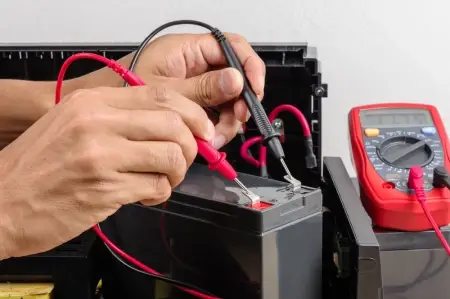
Direct current is a type of electrical current in which electrical charges move through the electrical conductor without changing its direction. This type of current is also known as DC; DC stands for 'direct current'.
The unidirectional flow of charges occurs through an electrical conductor, such as a metallic thread. The electrical flow could also be established through a semiconductor, an insulator, or even in a vacuum, as in a cathode ray tube.
The first commercial electrical network, developed by Thomas Edison in the late 19th century, used direct current. Today, power transmission and power distribution networks almost always use alternating current through power lines. This is due to the advantages of alternating current in terms of its possibilities with respect to DC.
High Voltage Direct Current ( HVDC) is an electric power transmission system used over long distances.
In the particular context of certain submarine crossings or underground lines, they use DC voltage applications. Thus, the electricity transport from these power plants is carried out by high voltage transmission with direct current (HVDC) for the economy, size, and reliability reasons.
In which direction does conventional current flow around a circuit?
An electric circuit's conventional current flow direction is from the positive terminal to the negative one. However, the free electrons move in the opposite direction along electrical conductors.

Nevertheless, we still use this convention, although the flow of electric charges in a DC circuit goes in the opposite sense.
Which are the direct current sources?
Here we name some sources of direct current (DC):
-
Chemical current sources: the first conventional current sources were galvanic cells, and then batteries were invented.
-
Direct current generators and dynamos: we can use electrical machines to obtain direct current on an industrial scale. These generators work on the principle of the dynamo invented by Hippolyte Pixii, which can convert mechanical movement into electricity.
-
Photovoltaic solar panels: another way to obtain electricity in the form of direct current is through photovoltaic solar energy.
Examples of direct current
Direct current is usually used for applications where we need a low voltage.
Here are some examples where direct current (DC) is used:
-
Photovoltaic solar panels generate a direct current that must be converted into an inverter that transforms alternating and direct current.
-
The batteries of a flashlight supply energy in DC form.
-
Electric cars: the power supply comes from its batteries.
-
The electricity that circulates through the mobile phone.
-
Railway locomotives are connected to DC power lines.
-
The motors of small household appliances.
-
DC constant voltage power supplies whose output voltage is stable even when the load changes.
Most of the small electrical devices at home are working with direct current. However, the current supplied by the electric company is alternating current. For this reason, a power supply is used to convert alternating current to direct current.
What is the difference between direct current (DC) and alternating current (AC)?
The difference between the AC and DC is how the electrons move within the material.
DC power: The flow of electric power occurs in one direction. From one pole to another, that is, this current can be found in batteries, batteries, or other low-voltage electrical devices.
AC power: The electrical energy flow occurs in two directions. This current is the one with the highest power and amperage. We can find it in houses and streets (high, medium, and low voltage).